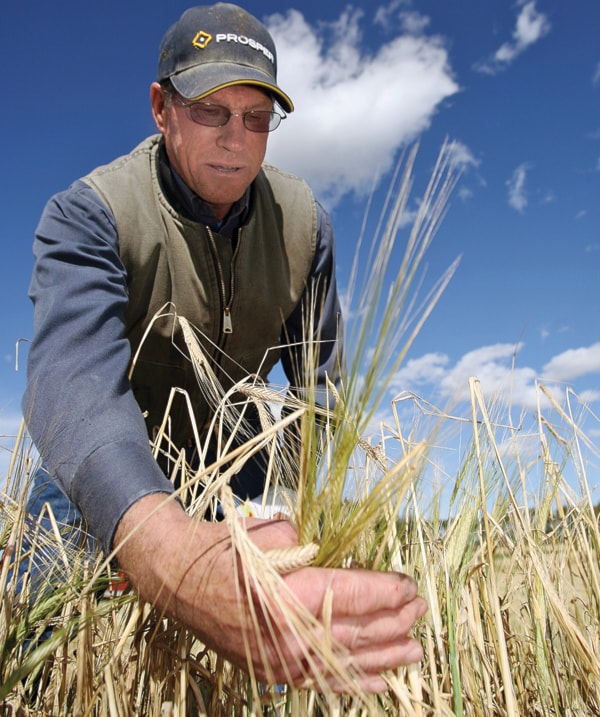The scale and scope of hail damage to cereal and oilseed crops this year has significantly delayed adjustors who are reviewing farmers’ claims.
Terry Niemala from Benalto and Dick Wymenga from Leslieville are among farmers who have finally met with their adjustors to review damage done in late July and early August.
Niemala said he lost half of his 2,800 acres of crop to hail storms.
Wymenga experienced a total wipeout in three fields and 20 to 50 per cent damage in the other.
The storms hit right when seed heads were starting to show, said Wymenga, Division 2 councillor for Clearwater County.
While both farmers filed their claims right after the storms, Wymenga didn’t see his adjustor until last week and Niemala’s adjustor arrived on Monday.
Niemala blames the delays on mismanagement at Agriculture Financial Services Corp., a provincial Crown corporation that provides insurance and other financial services to producers.
“A lot of farmers were disappointed with the service. I think there’s still some people that haven’t been done,” said Niemala.
“We didn’t know what to do. We were actually combining.
“We wanted to work the field.”
Wymenga said it’s fortunate that there hasn’t been a serious snow storm so far.
Brian Tainsh, adjusting manager for the province and Central Alberta region, said adjustors were stretched to the limit this year because well over half of the claims came after July 27 and roughly half of them were for partial damage.
Investigating a crop that has been totally destroyed is relatively quick and simple, said Tainsh.
But when there is mid-range damage, in which only a portion of the crop is wrecked, the adjustors need more time because they have to walk the entire field.
Canola is especially difficult because it’s a very difficult crop to walk through, Tainsh said on Wednesday.
On a big farm, it can take four or five days — sometimes longer — to complete an investigation, he said.
Adjustors typically work in one area at a time, clean up all the claims there, and then move on to the next, said Tainsh. This year, the agency was called to investigate hail claims in all areas of the province where crops are grown.
He has had 30 adjustors investigating claims in the Red Deer area the past two weeks, estimating that they have walked through 200 to 300 fields in that time.
Adjustors typically wait for 10 days after a storm to inspect a field. But evidence of hail damage doesn’t disappear, so adjustors can still assess a crop weeks after a storm, said Tainsh.
Farmers can work a field, as long as they leave a strip of the crop or a section of the swath for the adjustor to inspect, he said.
“We don’t hold the farmer up whatsoever. He can go ahead and harvest it. All we ask him is to leave us a swath that we can do the adjustment out of.”
If there’s nothing left in the strip, the adjustor will be able to find the evidence needed to support a claim of total damage, said Tainsh.
bkossowan@www.reddeeradvocate.com
— copyright Red Deer Advocate
